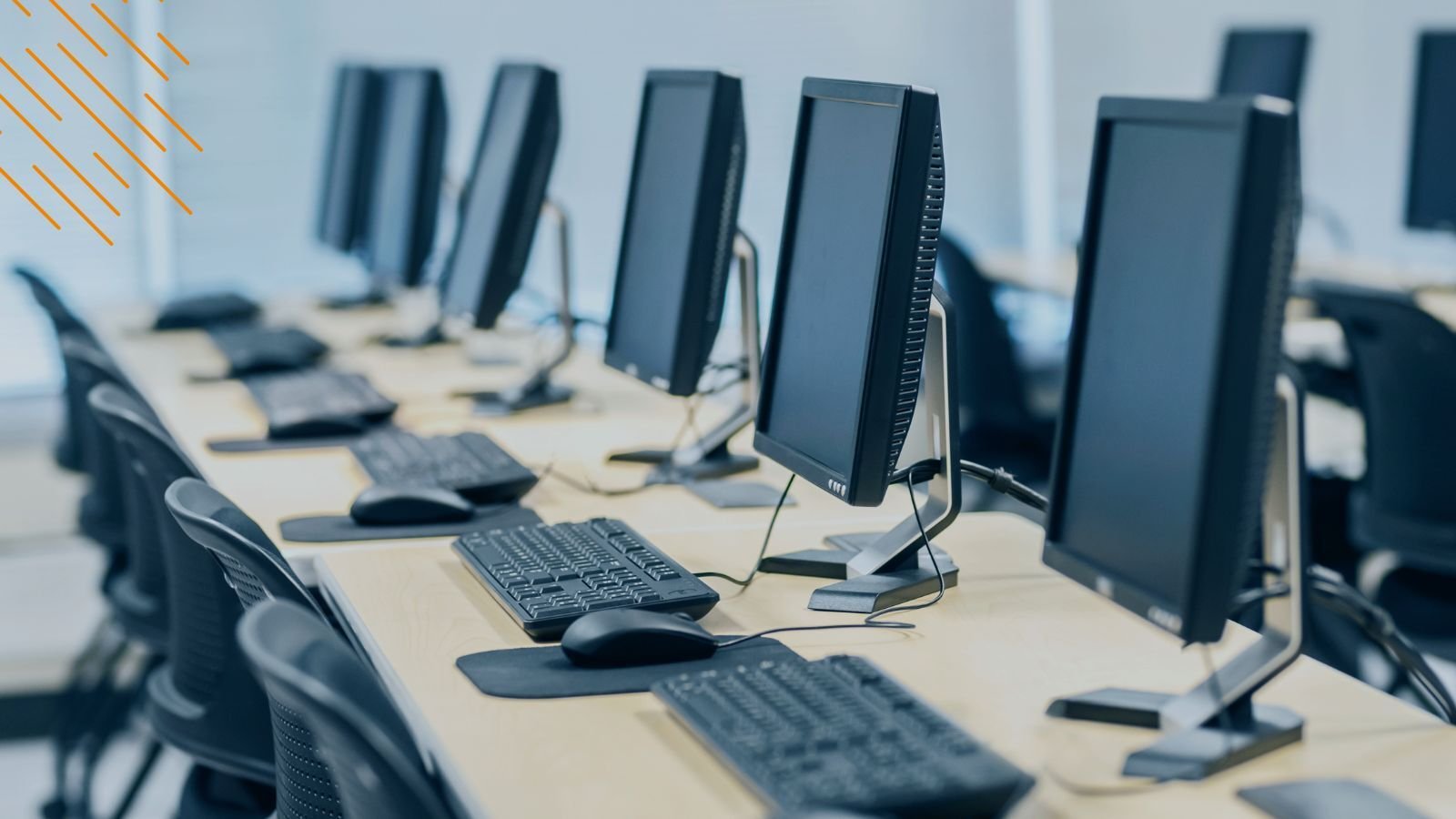Microsoft Endpoint Manager — Clever Marketing Or Fundamental Strategy Shift?
November 18th, 2019
3 min read
By Barry Angell

Last week, at this year's Ignite conference, Microsoft dropped a bunch of announcements that surprised even veteran industry analysts, e.g., Azure Arc, Project Cortex, Project Silica and, of course, Endpoint Manager.
While the other projects are fascinating in their own right, for you as an IT Project Manager tasked to manage your organization's Evergreen IT and IT Transformation Projects, the Endpoint Manager — Microsoft 365's new admin experience combining Microsoft System Center Configuration Manager (SCCM), Microsoft Intune, Desktop Analytics, Device Management Admin Console, and other endpoint management solutions under one management console — will be the most interesting piece of news.
But the biggest question at this point is: Is the combining of SCCM, Intune, and other management tools just a clever marketing rebranding trick or is there something more behind it? That's what I want to explore today!
What Is The Microsoft Endpoint Manager?
Before we talk about if and how this announcement will impact your IT strategy planning, let's briefly review what Microsoft Endpoint Manager is.
"Microsoft Endpoint Manager is the convergence of Intune and ConfigMgr functionality and data — plus new intelligent actions — offering [a] seamless, end-to-end management solution without the complexity of a migration or disruption to productivity," Brad Anderson explained in the announcement.
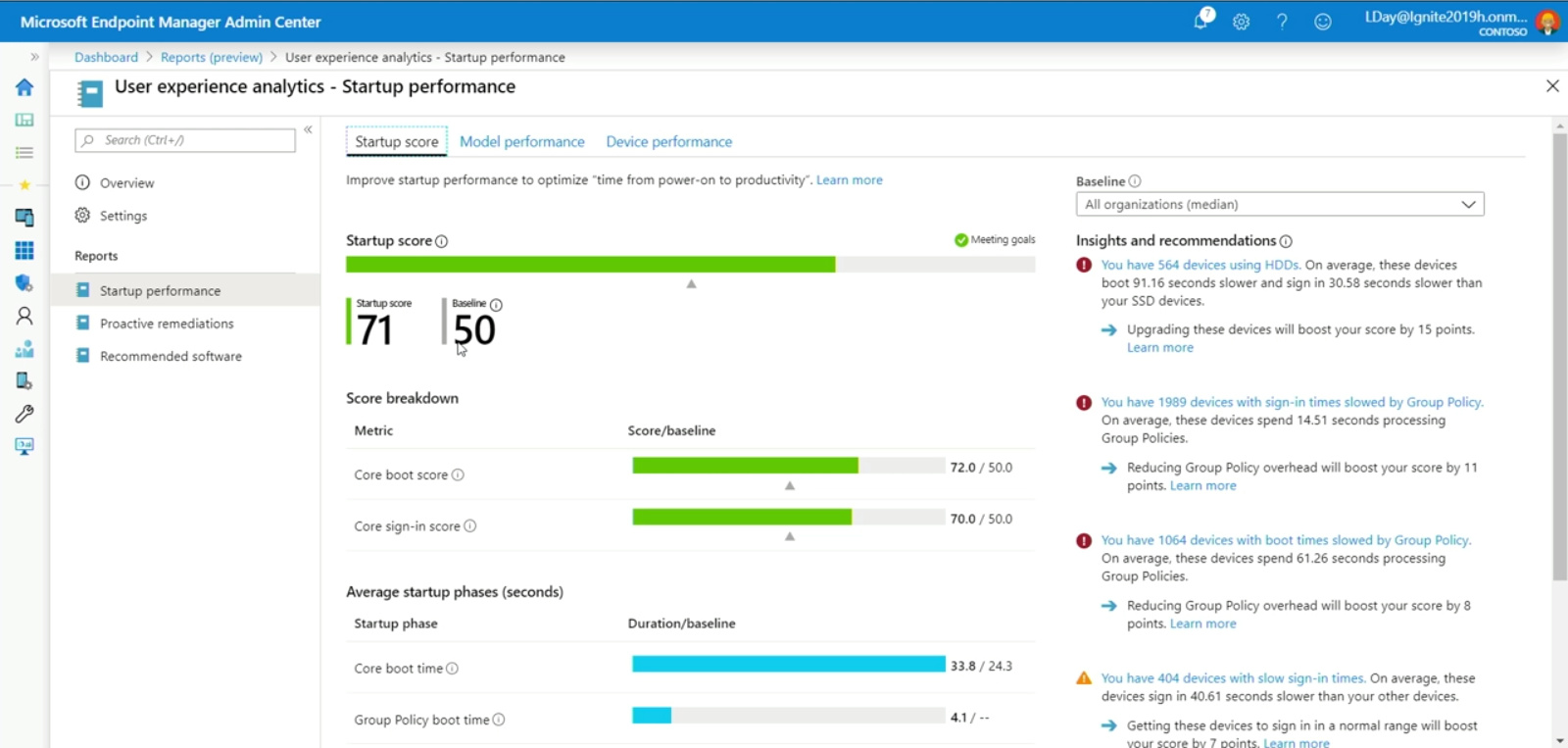
This means your cloud infrastructure, mobile devices, and your on-premise devices can not only be managed together, but benefit from being managed with each other. You can attach your ConfigMgr to your Intune to get cloud intelligence into your on-premise deployment and get an unified endpoint experience as well as a web-based console for your ConfigMgr admin.
While ConfigMgr, Intune, Desktop Analytics, Microsoft Autopilot, Azure Active Directory are today's core components, even workflows from Windows Virtual Desktops will be surfaced through this console in the future.
One Central Microsoft 365 Admin Console
One of the most important motivators for Microsoft Endpoint Manager was to provide one "single pane of glass" through which their solutions are managed. After realizing that they had 27 different portals to manage the Microsoft 365 experience, Microsoft simplified management under one portal (the Microsoft 365 Admin Center) that includes seven specialized sub-areas (productivity, teams, email, security, compliance, endpoint management, as well as identity and access) for specialists.
Driving home this year's marketing strapline that Microsoft 365 as the Modern Workplace is "loved by users, loved by IT, trusted by all", Microsoft Endpoint Manager aims to provide a native M365 admin experience that allows IT easy access to all Modern Workplace services.

Various Use Case Scenarios
In addition, Endpoint Manager could be used in a large variety of scenarios, such as risk-based control, zero touch provisioning (Autopilot), intelligent security, advanced analytics (emphasis on Technology Experience Score), unified management ("we can provide what no other vendor can"), and full-stack integration.
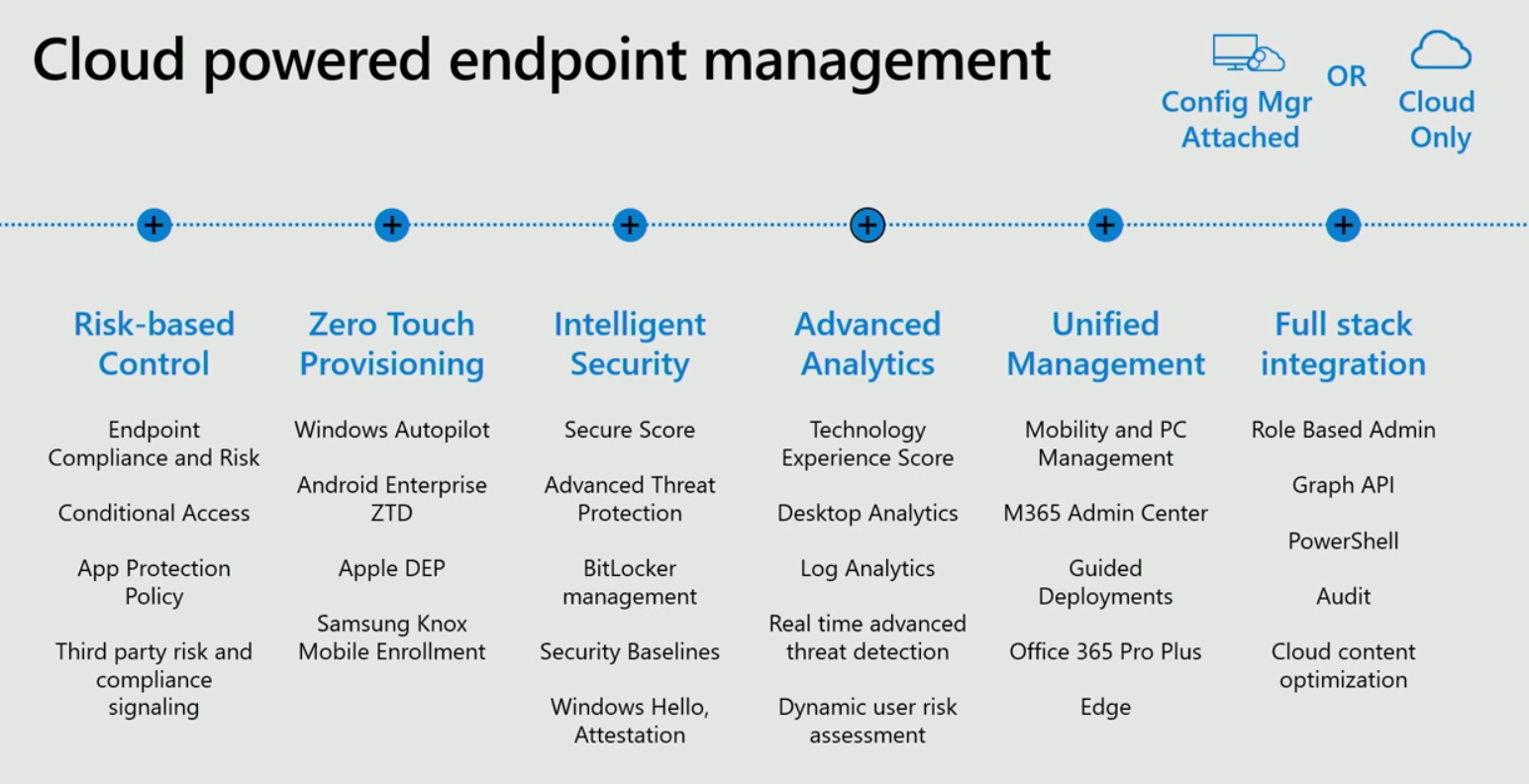
This is a snapshot of the use cases mentioned by Microsoft product managers during the demos.
How Does Microsoft Endpoint Manager Fit Into Microsoft's Modern Workplace Vision?
In the past, Microsoft encouraged all enterprise customers to leave SCCM behind and move to Intune (there were even RIP rumors) — or at least move to a hybrid approach they coined as "co-management".
However, last year at Ignite, Microsoft angered some early adopters when its new application compatibility assessment solution, Desktop Analytics, was only supporting SCCM but not Intune. This move indicated that despite Microsoft trying to move enterprises towards the cloud, the vast majority of large organizations remained on ConfigMgr — mainly due to the huge workload that comes with moving to a new management environment, but also due to the double licensing of SCCM plus Intune.
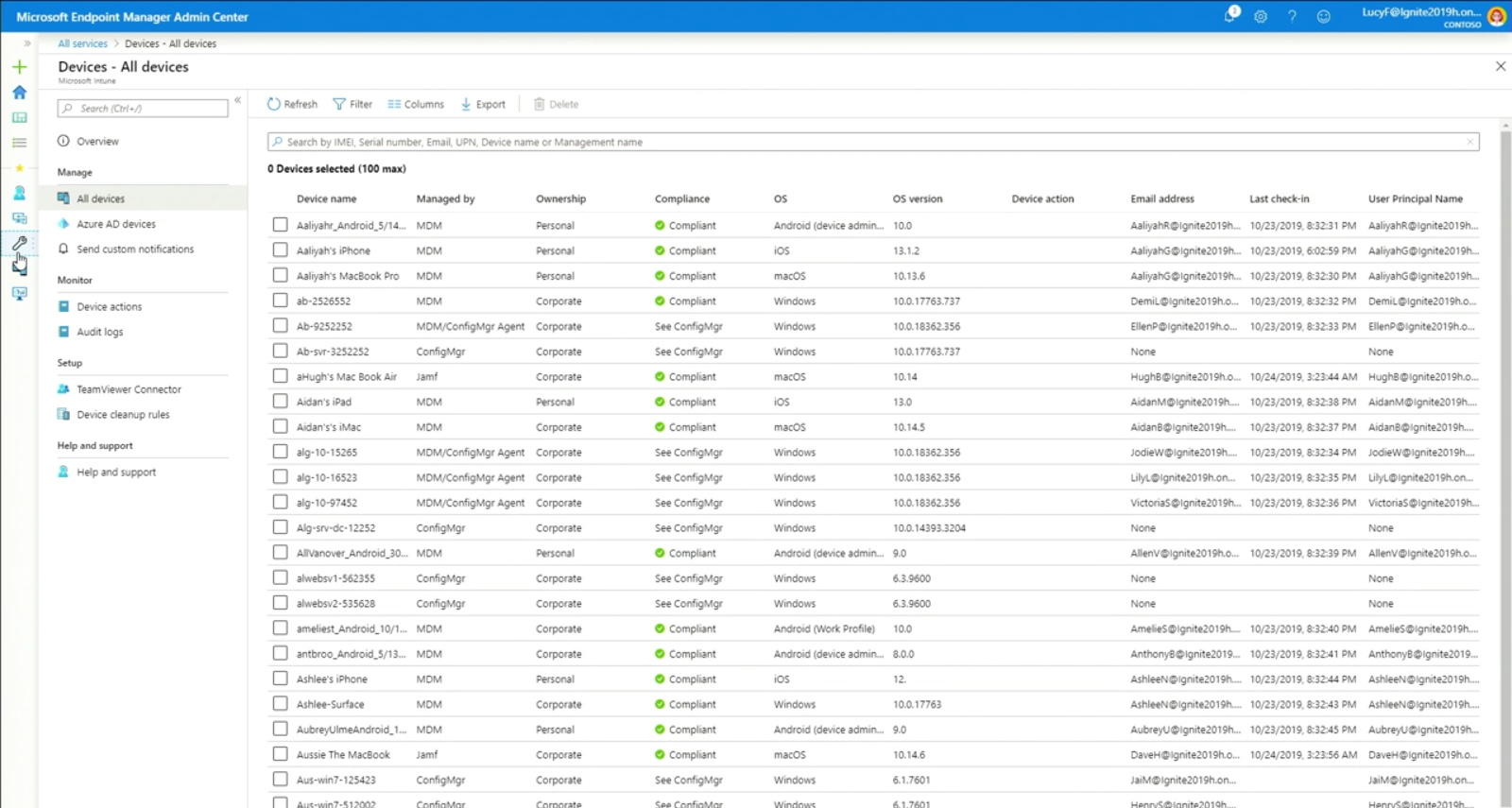
Now, Microsoft wants to be crystal clear: "Our management vision has not been as simple as it could be. ConfigMgr and Intune have both played a role, but it hasn’t always been clear what the future holds. So, let me be very clear—this vision includes both ConfigMgr and Intune. Co-management isn’t a bridge; it’s a destination," according to Brad Anderson, Corporate Vice President of Microsoft 365.
What does that mean for the future of ConfigMgr? Brad Anderson's pinned tweet answers that question quite frankly:
i’ve been asked a couple times today if Microsoft Endpoint Manager means the death of #ConfigMgr —
— Brad Anderson (@Anderson) November 4, 2019
honestly, the truth is really simple: MEM means ConfigMgr has eternal life!#MSIgnite pic.twitter.com/AeMp5eGxa7
Endpoint Manager Licensing: A (Positive) Surprise For Many
One of the most exciting parts of the announcement for many smaller or non-profit customers was probably the new licensing terms — making co-management much more affordable and an option for most. Essentially, if you already have a ConfigMgr license, you are covered by Software Assurance; and if you already have Azure Active Directory (AAD) P1, you can enroll your PCs into Intune in a co-management scenario without needing an additional Intune license. You simply need to set up Azure Active Directory, which you already have done if you have Office 365!
To manage non-Windows devices through Microsoft Endpoint Manager, you still will need either an Intune, an Enterprise Mobility & Security (EMS), or a Microsoft 365 E3 (or higher) license. Microsoft Endpoint Manager will be available December 1st, 2019.
We will keep a close eye on this space and update you if there are any significant developments. It will be interesting to see whether Microsoft Endpoint Manager becomes a single point of connection in the future or if it becomes the aggregation tool.
What are your thoughts? Have you had a chance to try it out? Please share in the comments below.
Image Credit: Microsoft, 2019.
Barry is a co-founder of Juriba, where he works as CEO to drive the company strategy. He is an experienced End User Services executive that has helped manage thousands of users, computers, applications and mailboxes to their next IT platform. He has saved millions of dollars for internal departments and customers alike through product, project, process and service delivery efficiency.


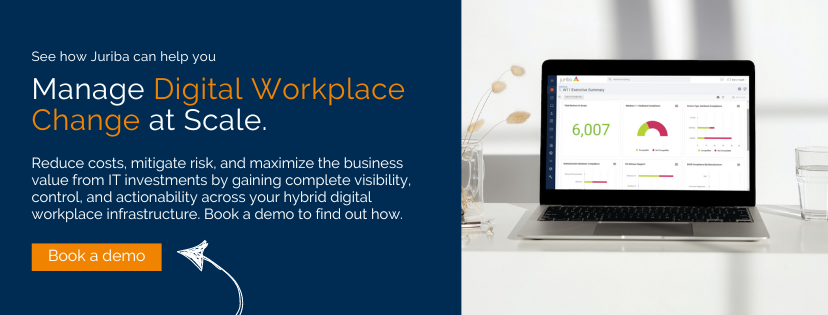
![What is a Digital Workplace? [Definition]](https://blog.juriba.com/hs-fs/hubfs/What%20is%20a%20Digital%20Workplace%20%5BDefinition%5D.jpg?width=1600&height=900&name=What%20is%20a%20Digital%20Workplace%20%5BDefinition%5D.jpg)
